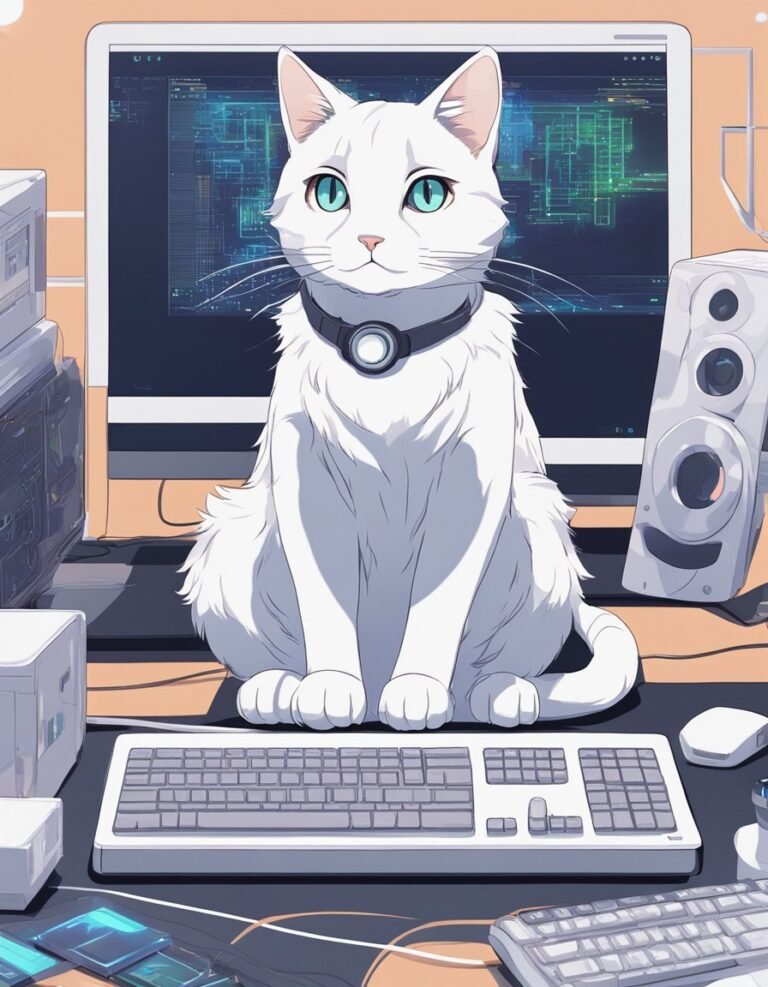Cat Algorithms: Digital Patterns and Feline-Inspired Coding Secrets

The digital world intertwines with the enigmatic elegance of cats in an intriguing symphony of algorithms.
I’ve always marveled at the precision with which technology can mimic natural patterns.
Like many, I’ve watched online videos where algorithms identify cats with near-mystical accuracy, and I’ve wondered about the digital architecture that enables such feats.

In my journey through the labyrinth of information, I’ve stumbled upon cat algorithms, the digital patterns that piece together the feline mystique in the virtual realm.
Not unlike cats themselves, these patterns are complex, and yet they exude a sense of pure simplicity.
This crossover of technology and nature, an alchemy of zeros and ones with whiskers and paws, paints a vivid picture of how our digital endeavors seek to mirror the nuanced behaviors and attributes of the animal kingdom.
Exploring Feline-Centric Machine Learning
Machine learning and the enigmatic world of cats collide in this venture.
I’m peeling back the curtain to reveal the intricacies of feline behavior through the lens of data and algorithms.
Decoding Feline Behavior through Data
I see patterns in the chaos of meows and purrs.
Initiatives like the analysis of Feline Grimace Scale© leverage deep neural networks to quantify pain in cats, providing a vital tool for veterinary diagnostics.
Deep learning is transforming how we assess and understand these cryptic creatures, transforming their subtleties into concrete data.
Pattern Recognition in Cat Movement
Movement is the dance of life for felines, and recognizing these patterns is like decoding an ancient language.
Studies on multi-cat households employ machine learning methods to monitor cats’ behaviors, important for gauging health and well-being.
The articulation of deep learning has enabled the identification of individual cats and their intricate physical vocabulary.
Through the digital eyes of machine learning, every purr resonates clearly, and every tail flick tells a story.
Real-World Applications of Cat Algorithms

In the pixelated world we live in, cats have transcended their physical fur and whiskers to claw their way into the digital fabric.
Cue the cat algorithms—a digital renaissance of feline smarts that truly has nine lives.
Interactive Digital Toys for Cats
I’ve seen it firsthand: felines engaging with the latest in digital mischief. Interactive digital toys for cats employ algorithms simulating the erratic movements of prey, captivating our kitty compadres.
These playful gadgets use LED screens or projection technology to keep our cats’ hunting instincts sharp as a claw, all while accruing high scores in their never-ending game of catch-the-dot.
Monitoring Systems for Feline Health
I must tell you, cat algorithms don’t stop at playtime.
Engineers and biologists have teamed up to create monitoring systems for feline health.
This tech isn’t science fiction—it’s as real as the purr of a kitten.
These algorithms are kind of like a co-pilot for cat health, ensuring that any odd behavior doesn’t go unnoticed.
Smart litter boxes and digitally-monitored feeding stations use weight sensors and behavior tracking to flag anything out of the ordinary.
It’s like having a guardian angel, in the form of data points, watching over our furry friends.

